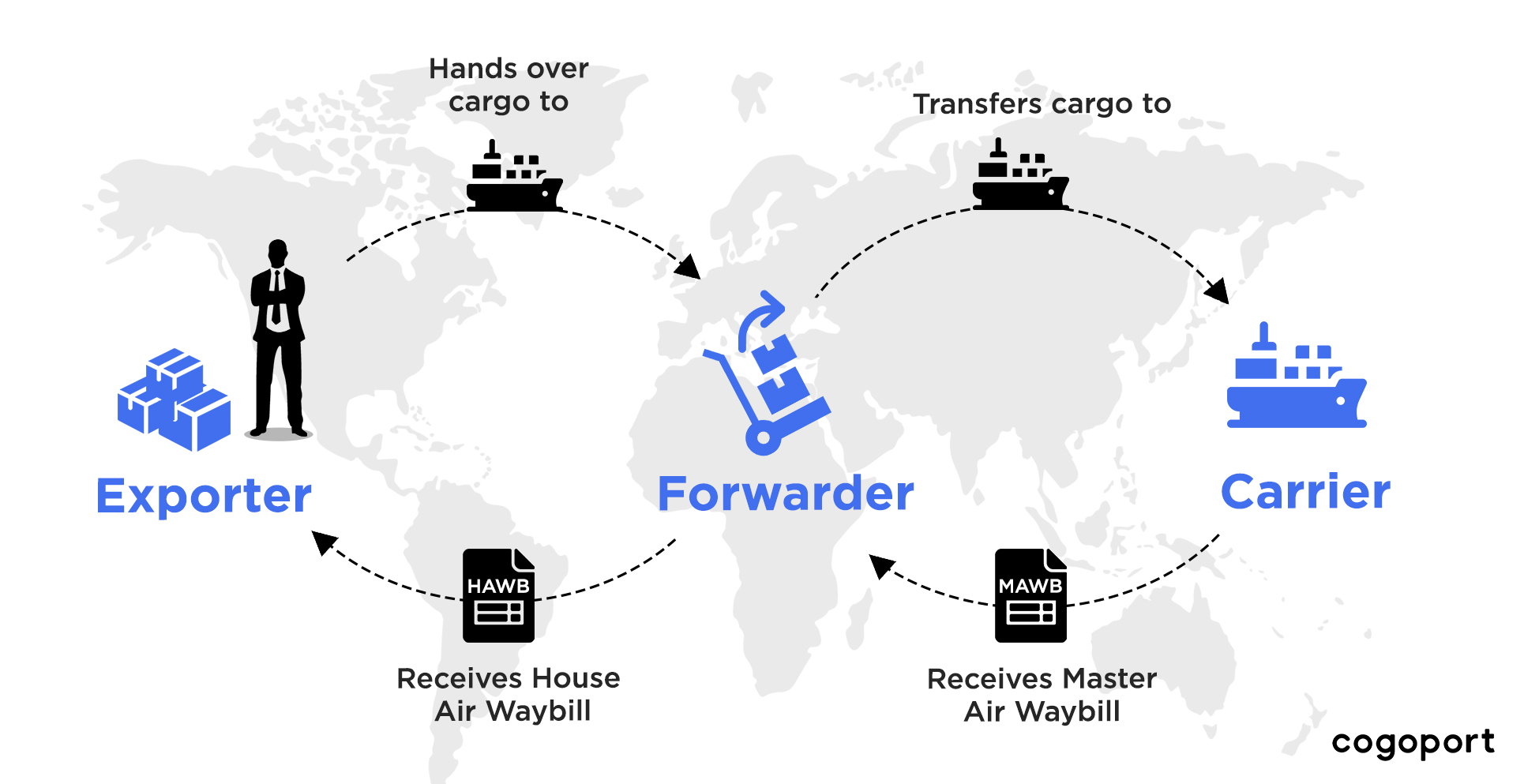
Book Ocean Freight Online in India (2025 Guide)
Learn how to book ocean freight online in India in 2025. Discover digital platforms, rate comparison tools, and quick booking via Cogoport.
Find out about the types of AWBs, their uses, how you can get one issued, and how you can use it to track your air cargo consignment.

An air waybill (AWB) – also called an airway consignment note or dispatch note – is a document that accompanies goods shipped by air. The International Air Transport Association (IATA) defines an air waybill as “a critical air cargo document that constitutes the contract of carriage between the ‘shipper’ and the ‘carrier’ [airline]”. The IATA is the global regulatory authority that prescribes a standard format of the air waybill.
Introduced in 2010, the electronic air waybill (e-AWB) has become the default document since 2019, digitising and simplifying the air cargo process. However, paper AWBs are still issued if and when they are “required due to applicable international treaties, national law, or as bilaterally agreed between the parties”, according to IATA.
In this piece, we delve deep into what an air waybill constitutes, what its various functions are, who issues it, who needs it, and how many types of it exist. Read on.
An air waybill is a form in which the following information must be provided:
An air waybill is a legal document that serves as:
The IATA distributes two types of air waybills:
An air waybill is issued in sets of eight with different colour codes. The first three count as original bills and the remaining five as copies. In the order of their placement and colour code, they are:
1. Green (original) – Carrier (issuing authority) copy
2. Pink (original) – Consignee copy
3. Blue (original) – Shipper copy
4. Brown (copy) – Receipt and proof of delivery
5. 6. 7. & 8. White (copies) – To be kept by the shipper and used for various purposes
Each air waybill also comes with a unique 11-digit number that is divided into three sections. The first three digits are related to the carrier, the next seven are the bill’s serial number, and the last digit is calculated by dividing the serial number by seven. This is called the check digit.

The air waybill is filled by the shipper (or an agent or freight forwarder working on their behalf) and issued by the airline. Here we trace the steps involved in issuing and receiving an air waybill by the various parties involved:
Step 1: Carrier issues the air waybill on receipt of the goods and completion of export customs formalities.
Step 2: Shipper receives original copy of the AWB after handover of goods to the carrier.
Step 3: One set of the AWB travels with the goods for transit reference requirement and import customs clearance. The shipper may also send the AWB through their bank to the consignee if the transaction is under a Letter of Credit.
Step 4: On arrival of the goods at destination, the consignee (or their agent) approaches the local office of the carrier and collects their copy of the air waybill.
In a typical transaction, the exporter hires a freight forwarder to take care of shipping the goods to the importer. The forwarder receives the goods from the exporter, passes them on to the carrier, and ensures they are delivered to the importer. In such a situation, two types of air waybills are issued. They are:

As the exporter, it is important to fill up your air waybill accurately or ensure that your freight forwarder does the same. Any irregularities can have various consequences for you:
Here’s a simple checklist on filling your air waybill and saving yourself a ton of trouble later on:
Apart from the uses mentioned above, an air waybill has one particularly useful function. Exporters and importers can use the 11-digit AWB number to track their shipments. This is because once an AWB is issued, the carrier will only identify your goods by their AWB number.
To track your shipment, all you need to do is visit the airline’s air cargo tracking page. There, enter your AWB number in the correct field and you will receive the latest available status of your cargo.
You can find the AWB number located prominently on all copies of your air waybill and in any emails and messages the carrier might have sent you regarding your shipment. Alternatively, you can call your carrier and ask for the AWB number, which they will provide after you have answered their questions regarding your shipment.

Those of you who ship by sea are familiar with the bill of lading (B/L). An air waybill is the air cargo equivalent of a bill of lading. However, the two are more different than similar.
The main difference is that unlike a bill of lading, an air waybill is NOT a document of title to goods. This means that an AWB is not proof of ownership of the goods being shipped. It is simply a contract for transportation of the goods.
Due to this aspect, the AWB is also a non-negotiable instrument unlike a bill of lading. What this means is that an AWB does not transfer ownership of the goods. As a result, air waybills offer less protection than bills of lading.
Another key difference is that an AWB does not specify the exact flight in which the goods will be shipped or the date on which the cargo will arrive at its destination.
To know more about bill of lading, its uses and types, Types And Usage Of Bill Of Lading Meaning